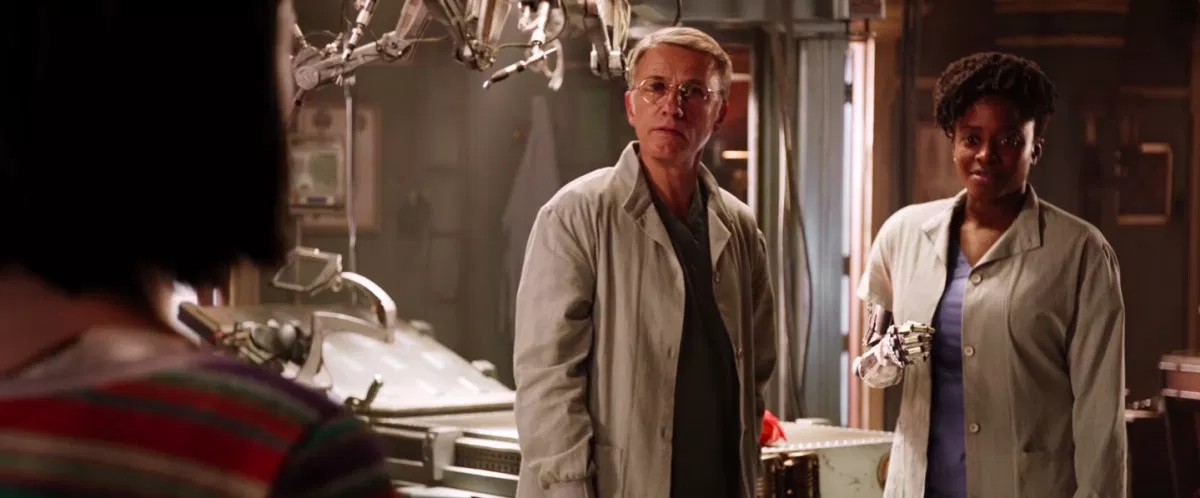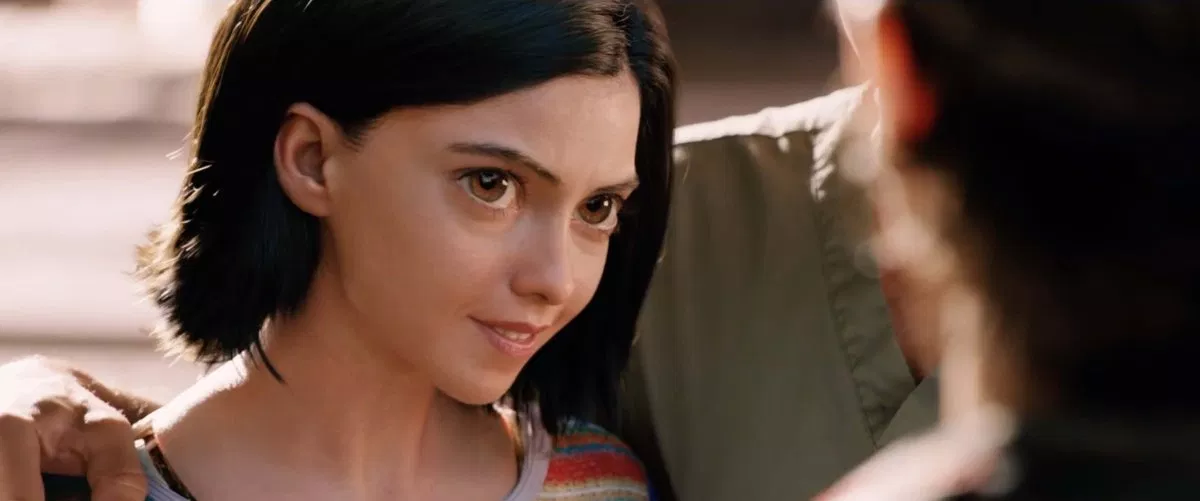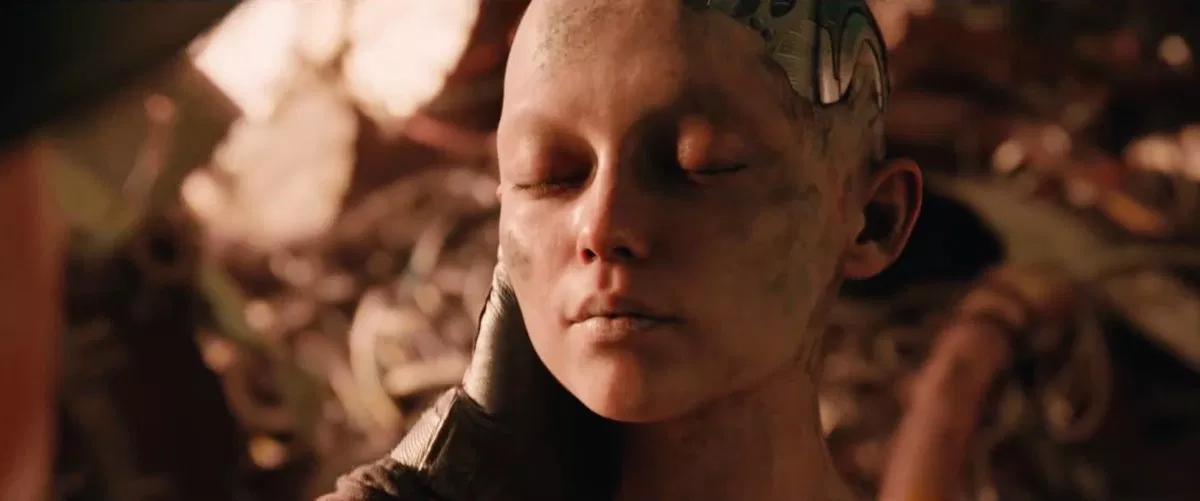The year is 2563. Most of the world has been destroyed in a great war, remembered by most as The Fall, three hundred years ago. Many have perished, but Zalem—the last floating city—has emerged victorious, while a settlement in its shadows, Iron City, has been formed by survivors. The prosperous Zalem exploits the labor of Iron City—manufactured goods are shipped up to the airborne city through the giant tubes, dumping refuse from the sky. It is in this very junkyard that cybersurgeon Dr. Dyson Ido (Christoph Waltz) discovers the battered, but very much still alive cyborg, Alita (Rosa Salazar).
As Ido’s cybersurgeon title might suggest, the good doctor’s job heavily involves technology. Indeed, in the world of Alita: Battle Angel, transhumanism reigns supreme—more than half of Iron City’s inhabitants are built with some form of mechanical prosthesis. Did they have their limbs replaced due to the hazardous environment? Or was it economic pressure? The reasons are not given.

Though the film can be categorized as a cyberpunk movie (high-tech, low-life, and the looming city) it doesn’t have the social commentary usually associated with the genre; Blade Runner, Alita is not. This Robert Rodriguez-directed, James Cameron-produced film is a spectacle-based joy ride first and foremost—and robot arms are, indeed, cool.
The amnesiac Alita adapts to the world under the care of the doctor and with the help of handsome street youth, Hugo (Keenan Johnson). However, she soon outgrows Ido’s protective parenting—yearning for the truth about her identity, and a life outside the clinic. In a run-in with Iron City’s most wanted criminals, Alita discovers that she wields the lost art of “Panzer Kunst”—a powerful form of cyborg hand-to-hand combat. But it’s not the only thing that returns to her in the heat of the battle, with fragmented memories of her former life flowing back to her in such moments. As Alita slowly pieces back together with her link to the great war, an ancient menace from Zalem emerges to threaten her and the people she loves.
In the visual department, Alita: Battle Angel is, for the most part, a success. Despite a constant clash between Alita’s anime-resemblant facial structure and her photorealistic surroundings, the real-time performance capture (on real sets) really help facilitate a physicality that digital doubles in many modern blockbusters lack. In presence, the fully-CG Alita’s interaction with her live-action co-stars is casual and natural. However, life occasionally goes out from Alita’s eyes as they focus on nowhere in particular. One would assume this type of problem had been solved more than a decade ago, but apparently not.
Similarly, as far as the writing goes, character interactions in Alita are far from naturalistic. The film is plagued by various script problems that range from awkward dialogue (Hugo to his friend: “She embarrassed you severely,”) to the unceremonious introduction and exit of characters, and the never-ending exposition dumps. Alita has deeply rich lore to mine from in its source material, but the on-screen world-building is anything but organic. Following the initial voiceover, every piece of information about the world that Alita has awakened to is verbally delivered to her (and so, us) exclusively. It’s the opposite of “show, don’t tell”—an anti-Mad Max: Fury Road, if you will.
Composer Tom Holkenborg (aka Junkie XL) dials down his signature synthetic drum-and-horn that propelled him to fame in Fury Road, instead opting for a more traditional string-based score. The result, unfortunately, is a generic and unmemorable score that only ever comes alive during the action.

By far the biggest weakness of Alita: Battle Angel is its lack of emotional weight. Characters are given backstories and motives, and yet no effort seems to have been spent on properly developing them. As the story progresses, you’ll see the supporting cast and villains follow their logical course of actions, but they won’t feel like anything more than a mechanical progression of cause-and-effect due to poor execution. In one scene, Ido tells Alita of his daughter’s murder by a Motorball athlete that then sparked his hatred for criminals and Motorball, and explains his protective attitude towards Alita. However, the heavy and emotionally-charged atmosphere created here is promptly destroyed in a flashback sequence that shows his daughter’s death in the most contrived way possible.
With the exception of Salazar (ironically the liveliest performer in the entire movie), a host of lackluster performances from the whole cast compound this problem even further. Co-star Keenan Johnson tries, but his romance with Alita is as free from chemistry as he was from charisma. The star-studded supporting cast of Christoph Waltz, Jennifer Connelly, and Mahershala Ali, meanwhile, is the most blatant collective phone-in I have ever seen.

Alita: Battle Angel does offer dazzling visuals. Set-pieces are varied, and cyborg physiology opens up exciting possibilities for some on-screen melee combat. But the truism stands—action doesn’t engage us when there’s no emotional investment. It doesn’t take long before the hollowness of Alita’s storytelling numbs you from all the excitement, though your mileage may vary.
There’s no one single defining weak link that weighs down the film, but a pile of mediocre elements layered on top of each other will certainly do the trick.
To help us continue to create content, please consider supporting us on Patreon.

